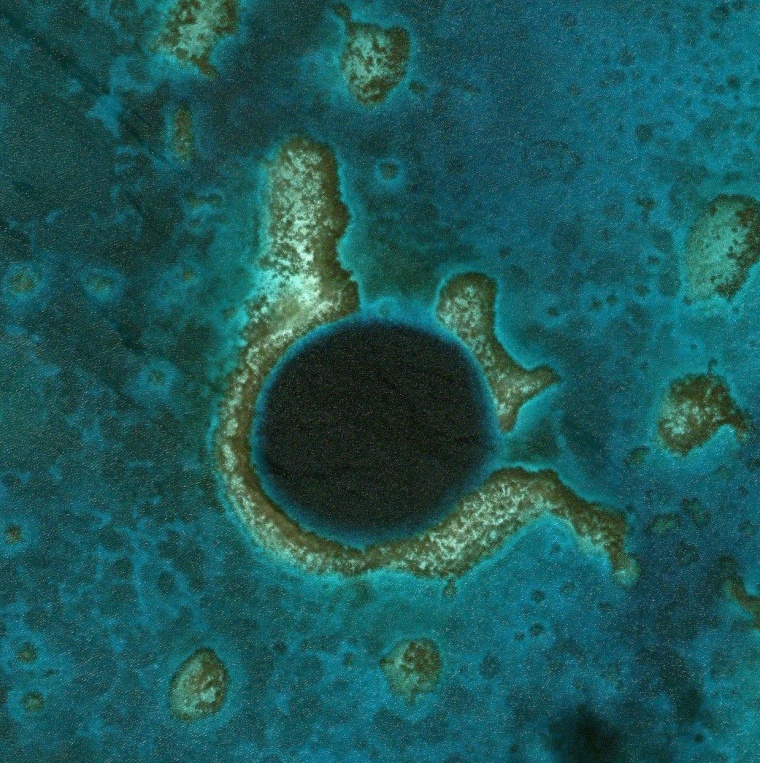SAN FRANCISCO — The ancient Maya civilization collapsed due to a century-long drought, new research suggests.
Minerals taken from Belize's famous underwater cave, known as the Blue Hole, as well as lagoons nearby, show that an extreme drought occurred between the year 800 and 900, right when the Maya civilization disintegrated. After the rains returned, the Maya moved north — but they disappeared again a few centuries later, and that disappearance occurred at the same time as another dry spell, the sediments reveal. [In Photos: Stunning Sinkholes]
Although the findings aren't the first to tie a drought to the Maya culture's demise, the new results strengthen the case that dry periods were indeed the culprit. That's because the data come from several spots in a region central to the Maya heartland, said study co-author André Droxler, an Earth scientist at Rice University.
The Maya civilization flourished in the Yucatan peninsula from 300 to 700. These ancient Mesoamericans built stunning pyramids, mastered astronomy, and developed both a hieroglyphic writing system and a complex calendar system. The Maya calendar became famous in recent years when some doomsayers wrongly claimed that it predicted the end of the world in 2012.
After the year 700, the Maya culture's building activities slowed, and the communities descended into warfare and anarchy. Historians have speculatively linked that decline with everything from the ancient society's fear of malevolent spirits, to deforestation completed to make way for cropland, to the loss of favored foods such as the Tikal deer. But since at least 1995, scientists have been focusing on the effects of drought.
The main driver of this drought is thought to have been a shift in the intertropical convergence zone, a weather system that generally dumps water on tropical regions of the world while drying out the subtropics. Scientists suggest that during the Maya decline, this monsoon system may have missed the Yucatan Peninsula altogether.

To look for signs of drought, the team drilled cores from the sediments in the Great Blue Hole of Lighthouse Lagoon, as well one in the Rhomboid Reef. Those sediments provide a record of the historical climate. Droxler and his colleagues analyzed the cores' chemical composition, in particular the ratio of titanium to aluminum. Low levels of titanium correspond to periods with less rainfall, Droxler said.
The team found that between 800 and 1000, when the Maya civilization collapsed, there were just one or two tropical cyclones every two decades, as opposed to the usual five or six. After that, the Maya moved north, building at sites such as Chichen Itza in Mexico. The sedimentary record suggests that another major drought struck between 1000 and 1100, a time frame that coincides with the fall of Chichen Itza.
The findings strengthen the case that drought helped usher in the long decline of the Mayan culture. "When you have major droughts, you start to get famines and unrest," Droxler said.
— Tia Ghose, LiveScience
This is a condensed version of a report from LiveScience. Read the full report. Follow Tia Ghose on Twitter and Google+. Follow LiveScience on Twitter, Facebook and Google+.